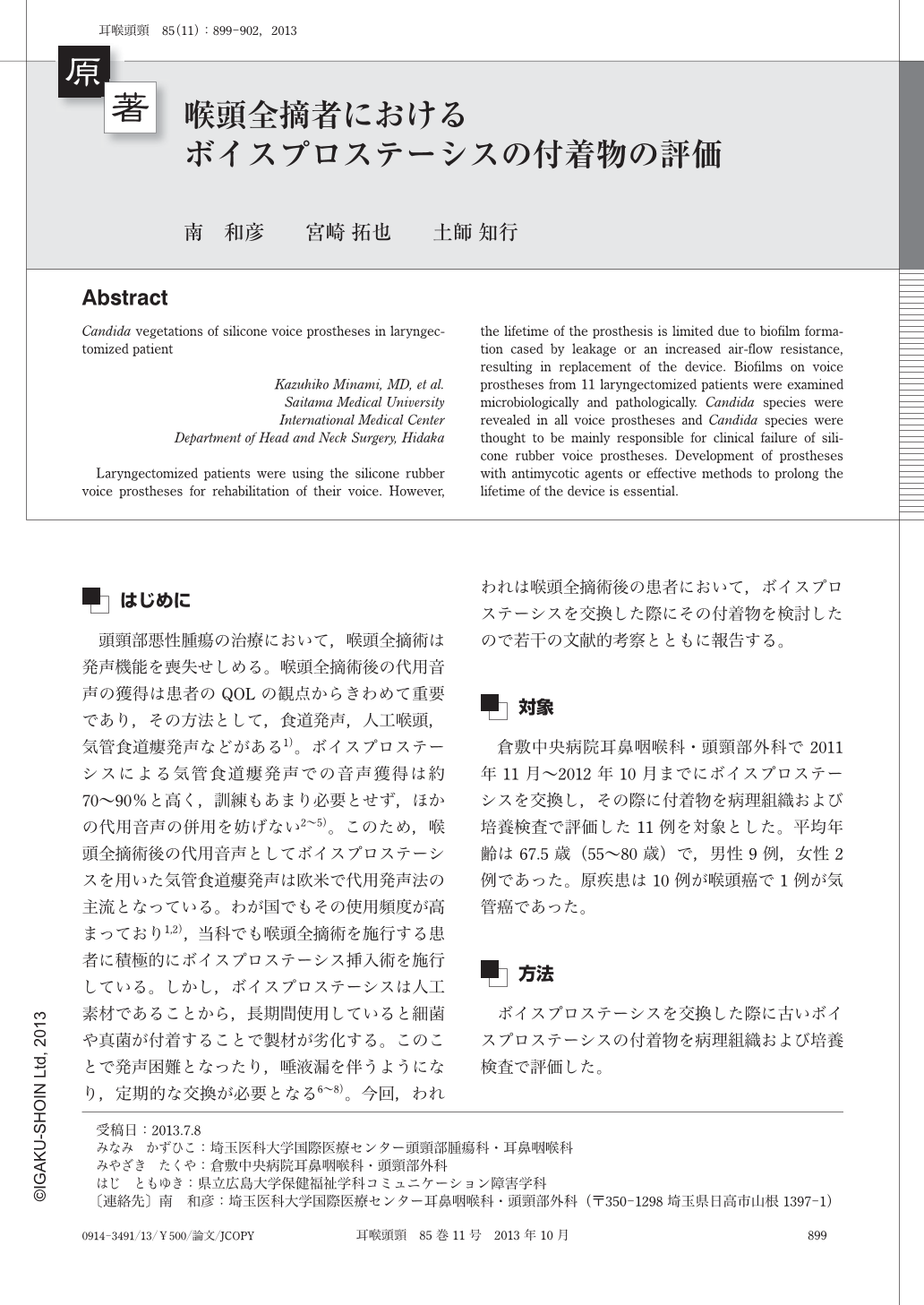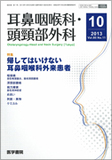Japanese
English
- 有料閲覧
- Abstract 文献概要
- 1ページ目 Look Inside
- 参考文献 Reference
はじめに
頭頸部悪性腫瘍の治療において,喉頭全摘術は発声機能を喪失せしめる。喉頭全摘術後の代用音声の獲得は患者のQOLの観点からきわめて重要であり,その方法として,食道発声,人工喉頭,気管食道瘻発声などがある1)。ボイスプロステーシスによる気管食道瘻発声での音声獲得は約70~90%と高く,訓練もあまり必要とせず,ほかの代用音声の併用を妨げない2~5)。このため,喉頭全摘術後の代用音声としてボイスプロステーシスを用いた気管食道瘻発声は欧米で代用発声法の主流となっている。わが国でもその使用頻度が高まっており1,2),当科でも喉頭全摘術を施行する患者に積極的にボイスプロステーシス挿入術を施行している。しかし,ボイスプロステーシスは人工素材であることから,長期間使用していると細菌や真菌が付着することで製材が劣化する。このことで発声困難となったり,唾液漏を伴うようになり,定期的な交換が必要となる6~8)。今回,われわれは喉頭全摘術後の患者において,ボイスプロステーシスを交換した際にその付着物を検討したので若干の文献的考察とともに報告する。
Laryngectomized patients were using the silicone rubber voice prostheses for rehabilitation of their voice. However, the lifetime of the prosthesis is limited due to biofilm formation cased by leakage or an increased air-flow resistance, resulting in replacement of the device. Biofilms on voice prostheses from 11 laryngectomized patients were examined microbiologically and pathologically. Candida species were revealed in all voice prostheses and Candida species were thought to be mainly responsible for clinical failure of silicone rubber voice prostheses. Development of prostheses with antimycotic agents or effective methods to prolong the lifetime of the device is essential.

Copyright © 2013, Igaku-Shoin Ltd. All rights reserved.


